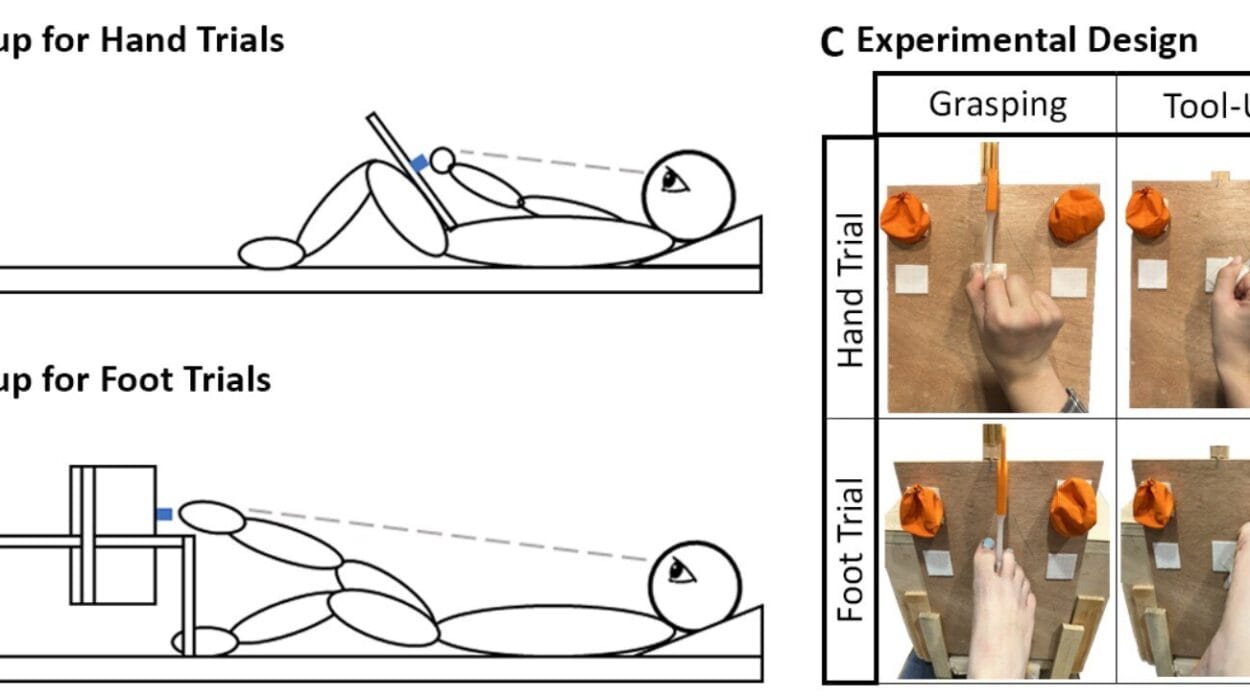Quantum physics may sound like something reserved for high-tech laboratories or the minds of brilliant scientists working on equations far too complex for everyday life. But here’s the truth: quantum physics is not just an abstract idea—it’s the very foundation of the modern world around us. The strange, almost magical rules of the quantum realm underpin technologies we use every day, from smartphones and computers to medical scans and even the way we understand chemical reactions in our own bodies.
The quantum world is bizarre. Particles behave like waves, things can exist in two states at once, and particles separated by vast distances can still remain mysteriously connected. And yet, this strangeness is quietly woven into the fabric of daily human life.
In this article, we will explore fifteen powerful, fascinating, and surprising ways that quantum physics shows up in everyday experiences. Far from being esoteric, quantum mechanics is deeply practical—and without it, our modern civilization simply wouldn’t exist.
1. Smartphones and Microprocessors
Every time you send a text message, watch a video, or browse the internet, you are relying on quantum physics. At the heart of smartphones and computers are microprocessors—tiny chips containing billions of transistors. These transistors are built using semiconductors, materials whose ability to conduct electricity depends directly on quantum mechanics.
The very concept of a transistor, which switches electrical currents on and off to represent binary “0” and “1,” arises from quantum principles like electron tunneling and the band-gap theory of solids. Without quantum physics, engineers could never have designed the chips that power modern devices. In essence, your smartphone is a quantum machine in your pocket.
2. Lasers
Laser beams, whether in barcode scanners, DVD players, fiber-optic communications, or even medical surgeries, exist thanks to quantum physics. The word “laser” itself stands for “Light Amplification by Stimulated Emission of Radiation.”
Stimulated emission—the process by which photons cause atoms to emit identical photons—is a purely quantum phenomenon. In classical physics, there’s no explanation for why photons would behave this way. But in the quantum world, electrons in atoms occupy discrete energy levels. When an electron drops to a lower level, it emits a photon, and under the right conditions, this emission can be amplified into a coherent beam: a laser.
Lasers are everywhere: in grocery store scanners, entertainment devices, industrial cutting tools, and even the fiber-optic cables that carry the internet.
3. GPS and Relativity
You may not realize it, but the GPS navigation system that guides you on road trips and helps delivery drivers find your address works because of quantum physics. GPS satellites rely on atomic clocks—clocks that keep time by measuring the vibrations of atoms like cesium or rubidium. These vibrations occur at precise frequencies dictated by quantum mechanics.
Even a fraction of a nanosecond error in time measurement would cause GPS coordinates to drift by kilometers. Thanks to quantum precision in atomic clocks, GPS can pinpoint your location within a few meters. Without quantum mechanics, navigation systems—and much of modern transportation—would be useless.
4. LED Lights
The light from your LED bulbs is a direct gift of quantum mechanics. LEDs (light-emitting diodes) work on the principle of electron energy bands in semiconductors. When electrons jump from a higher energy state (the conduction band) to a lower one (the valence band), they emit photons—tiny packets of light energy.
By engineering the materials, scientists can control the color of the emitted light, whether it’s warm white for a cozy room or blue for your car headlights. LEDs are energy-efficient, long-lasting, and environmentally friendly, all because of the quantum behavior of electrons in semiconductors.
5. Quantum Tunneling in Electronics
The strange process of quantum tunneling—where particles pass through barriers they should not be able to cross—might sound like science fiction, but it’s a real phenomenon central to modern electronics.
In devices like flash memory and scanning tunneling microscopes, electrons “tunnel” through barriers thanks to their wave-like properties. Without tunneling, you wouldn’t be able to store photos on a memory card or analyze materials at the atomic level.
Your computer’s ability to save and retrieve files in nanoseconds relies on this odd but practical quantum trick.
6. MRI Scans
Medical imaging, specifically Magnetic Resonance Imaging (MRI), is another everyday application of quantum physics. MRI machines rely on nuclear magnetic resonance—a phenomenon rooted in quantum mechanics.
Protons in the body’s hydrogen atoms behave like tiny spinning magnets. In the strong magnetic field of an MRI machine, these spins align in predictable ways. When radio waves are applied, the spins change states and emit signals that can be translated into detailed images of tissues and organs.
Every time a doctor diagnoses a brain injury, tumor, or heart condition with an MRI, they are harnessing quantum mechanics to peer inside the human body safely and non-invasively.
7. Digital Cameras and Photography
The photos you take with your phone or digital camera are captured thanks to the photoelectric effect—a phenomenon explained by Albert Einstein using quantum theory.
When light hits the semiconductor material in a camera’s sensor, it knocks electrons loose, generating an electrical signal. Each pixel measures the incoming light, creating the image you see. Without the quantum understanding of how light interacts with matter, photography as we know it today wouldn’t exist.
8. Solar Panels
Solar panels convert sunlight into electricity using the photovoltaic effect—a quantum phenomenon. When photons from sunlight strike a semiconductor, they transfer their energy to electrons, freeing them to move and generate electric current.
The efficiency of solar cells depends heavily on quantum properties of materials, such as their band gaps. Quantum mechanics allows engineers to design materials that maximize energy absorption, making renewable energy a reality. Every time solar panels power homes or charge devices, they’re putting quantum physics into action.
9. Chemistry and Molecular Reactions
The entire science of chemistry is built on quantum mechanics. The way atoms bond, the shapes of molecules, and the rates of chemical reactions are all determined by quantum rules.
For example, why does water have its unique properties? Why does oxygen bind to hemoglobin in blood? These mysteries can only be answered with quantum mechanics, which explains electron orbitals, molecular interactions, and chemical stability. Even the taste of food, the color of flowers, and the metabolism of cells are quantum at their core.
10. Fiber-Optic Communications
The internet itself relies on quantum mechanics. Fiber-optic cables, which carry vast amounts of data around the world, use lasers to transmit information as pulses of light.
Quantum physics governs how photons travel through glass fibers with minimal loss. Engineers design fibers to take advantage of quantum optical principles, allowing billions of messages to travel across oceans every second. Without quantum mechanics, global communication would be far slower and less reliable.
11. Superconductors and Maglev Trains
Superconductors are materials that conduct electricity without resistance when cooled to very low temperatures. Their behavior is explained only through quantum mechanics, specifically the idea of electron pairs (Cooper pairs) moving in a coordinated quantum state.
This phenomenon powers technologies like maglev (magnetic levitation) trains, which float above tracks with almost no friction, allowing for incredibly smooth and fast travel. Quantum mechanics is literally lifting trains into the air.
12. Quantum Cryptography
In an age of increasing cyber threats, quantum mechanics is reshaping security. Quantum cryptography uses the principles of quantum entanglement and uncertainty to create unbreakable codes.
One key principle is that observing a quantum system inevitably changes it. This means that any attempt to eavesdrop on a quantum communication system will immediately be detected. While still in development, quantum cryptography promises to secure sensitive information like financial transactions and government communications in the future.
13. Biological Processes and Photosynthesis
Even life itself depends on quantum physics. In photosynthesis, plants capture light energy and convert it into chemical energy. Recent studies show that the energy transfer in photosynthesis happens with almost perfect efficiency thanks to quantum coherence—a phenomenon where particles exist in multiple states simultaneously, allowing energy to take the most efficient path.
Without this quantum trick, plants wouldn’t grow, and life as we know it wouldn’t exist. Every breath of oxygen we take is a gift of quantum mechanics in action.
14. Fluorescent and Phosphorescent Materials
Glow-in-the-dark toys, fluorescent paints, and safety signs all rely on quantum mechanics. Fluorescence and phosphorescence occur when electrons in materials absorb energy, jump to higher states, and then release that energy as visible light when they return to lower states.
The colors you see are dictated by quantum energy levels. From fun decorations to essential safety lighting, these phenomena showcase quantum mechanics in daily life.
15. Quantum Biology in the Human Body
Even your own body is a quantum system. Processes like enzyme function, olfaction (the sense of smell), and even the migration of birds may involve quantum tunneling and entanglement.
For example, enzymes accelerate chemical reactions in cells at incredible speeds. Many biologists now believe this efficiency can only be explained by quantum tunneling, where particles bypass energy barriers. Similarly, our sense of smell may rely on detecting vibrations of molecules at the quantum level.
Quantum mechanics is not just in machines—it is inside you, shaping life itself.
Conclusion
Quantum physics may seem alien, strange, and even mystical at first glance. But as we’ve seen, it is deeply practical and profoundly embedded in daily life. From the lightbulbs in our homes to the smartphones in our hands, from medical imaging to renewable energy, quantum mechanics makes modern civilization possible.
What’s more, quantum mechanics is not finished shaping the world. Emerging technologies like quantum computers and quantum internet could revolutionize communication, medicine, and science in ways we can barely imagine.
So the next time you flick on an LED light, take a photo, or check your GPS location, remember: you are not just using technology. You are harnessing the most mysterious and powerful laws of the universe—the laws of quantum physics.






